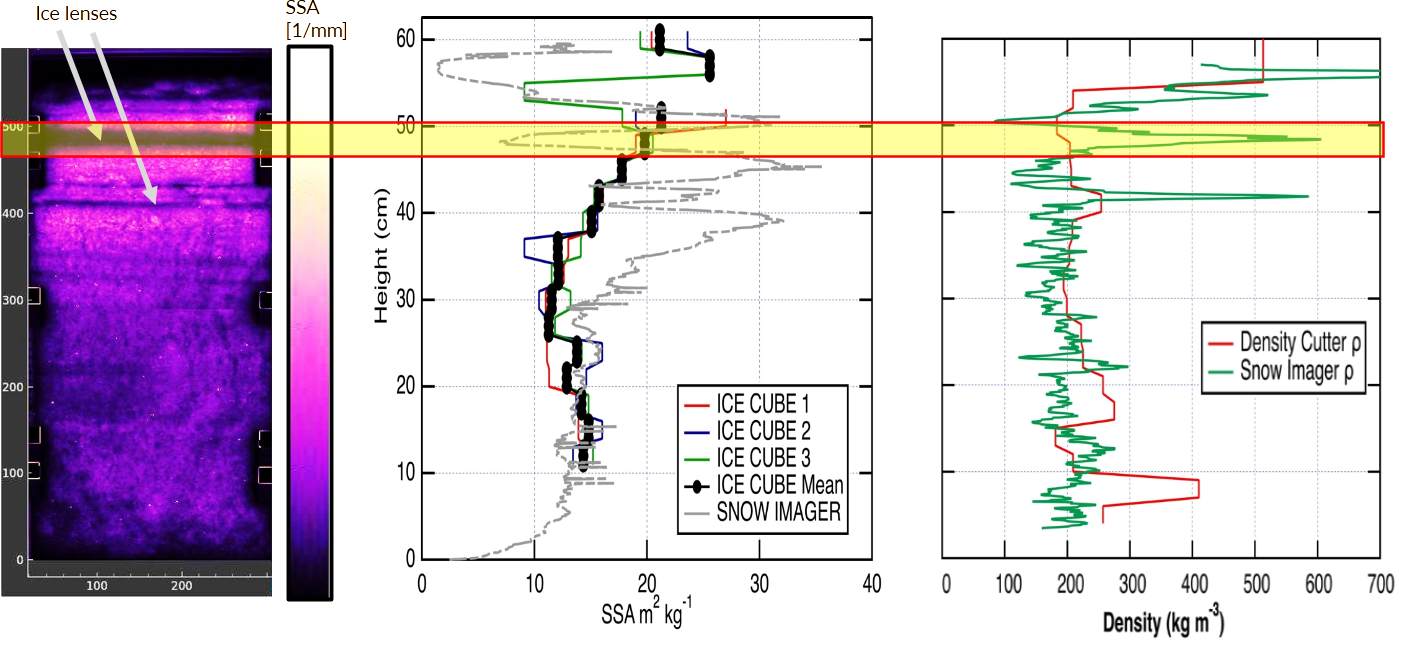Results from the field
The SnowImager has been tested in different locations and environments. Data collection took place ins Switzerland, around Davos and at Jungfraujoch, as well as in Finland, Greenland and Antarctica. Snow surface area and density have been retreived from these datasets and compared to measurements of other type of instruments.
Dome C, Antarctica
Polar snowpacks typically show horizontally strongly inhomogeneous snow layering due to snow redistribution by wind. The SSA retrieval method of the SnowImager provides a useful tool for characterizing the 2D spatial variability of snow on the centimetre or metre scale.
During Antarctic summer 23/24 a SnowImager has been operated at Dome C station. The figure shows an SSA map of a vertical 0.5 m x 0.7 m snow profile.
This project has been supported by the Swiss Polar Institute and the French Polar Institute Paul-Émile Victor (IPEV).
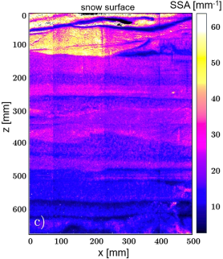
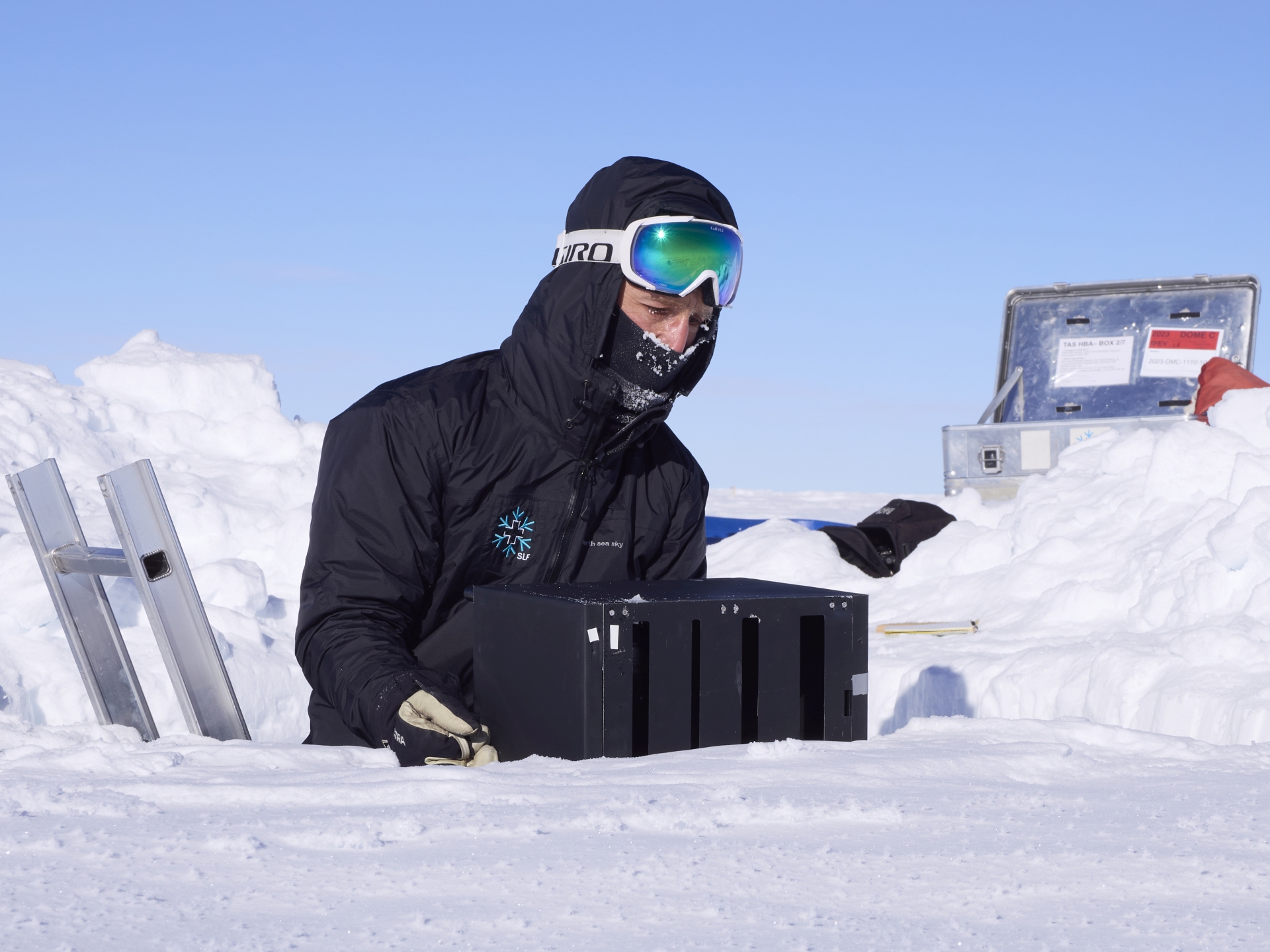
Weissfluhjoch, Davos
Regular observations took place at the SLF test site in Davos. Comparisons with other instruments show good agreement in SSA (IceCube Instrument) and density (density cutter and computer tomography). The figure shows an example of an SSA map (on the left), an SSA profile and a density profile with reference values.
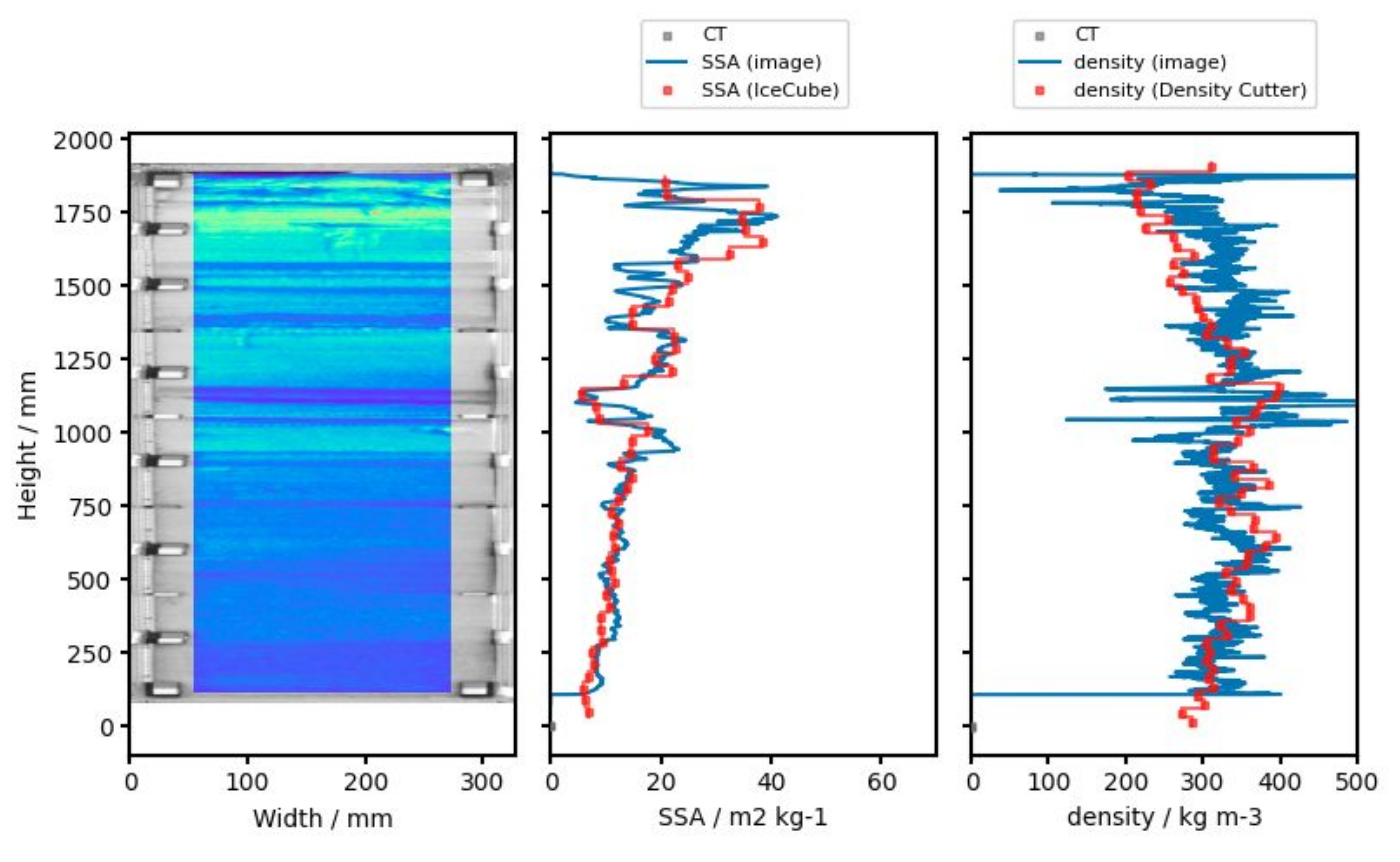
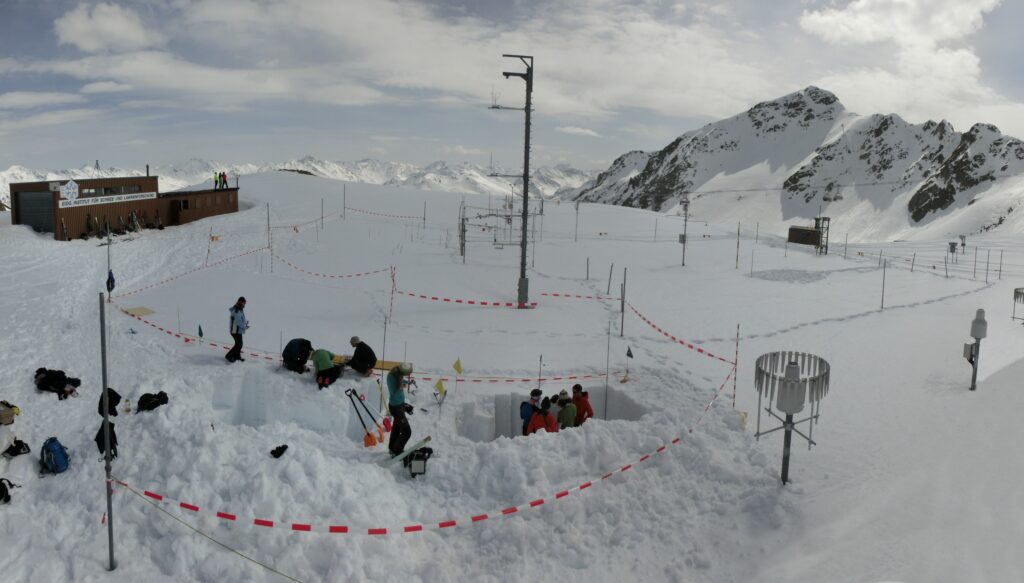
Sodankylä, Finland
These measurements have been taken in February 2024. This example includes several ice layers. These are very thin structures that many other field instruments cannot resolve. The figure shows an SSA map and the corresponding SSA and density profiles in comparison to measurements with other methods/instruments. The SnowImager is able to resolve the low SSA and high density ice layers that are a few millimetre up to a centimetre thick unlike the Density cutter and the IceCube devices.
